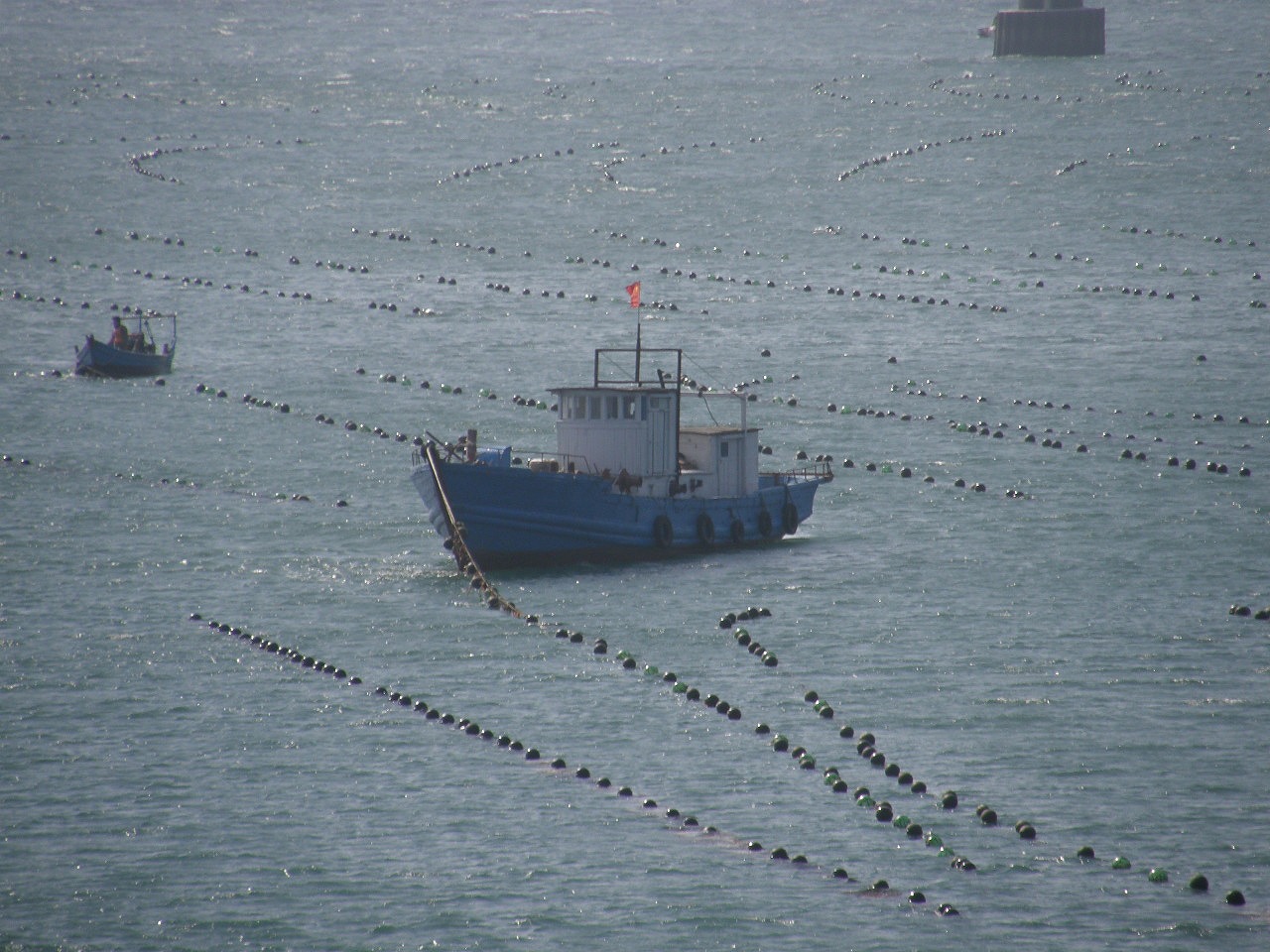Cultured Pearls 養殖真珠

真珠養殖の歴史は古く、中国で1167年の文昌雑録に真珠養殖の記事があり、13世紀には仏像真珠という例がある。ただしこれらは貝殻の内側を利用する貝付き真珠である。
19世紀後半から20世紀初頭にかけて、フランスのルイ・ブータン、イギリス人ザ ビル・ケントなど各国で養殖真珠の研究が行われていた。
日本では、1893年に日本の東大三崎臨海実験所箕作佳吉の指導をうけた御木本幸 吉が英虞湾神明浦で養殖アコヤガイの半円真珠の生産に成功した。 また、1905年 に御木本幸吉は英虞湾の多徳島で半円の核を持つ球状真珠を採取したことが知ら れている。この採取によって御木本幸吉は真円真珠の養殖成功を確信する。この 1905年が真円真珠の生産に成功した年と書かれることが多いが、これは誤りである。真円真珠の発明者は、日本では西川藤吉・見瀬辰平の2人があげられる。 1907年見瀬辰平が、はじめて真円真珠に関し「介類の外套膜内に真珠被着用核を 挿入する針」として特許権を獲得した。続けて西川藤吉が真円真珠生産に関し真珠形成法の特許を出願する。この一部が前述の見瀬辰平の特許権に抵触するとして紛争が起こる。調停の結果、西川籐吉の名義で登録し特許は共有とすることとなった。この真珠養殖の特許技術は日本国外ではMise-Nishikawa Methodとして知られている。 また1916年および1917年に西川藤吉の特許が4件登録された。西川藤吉は既に物故していたため、息子の西川真吉が権利を受け継いだ。現在の真珠養殖の技術は西川藤吉のこれらの技術に負うところが多い(西川藤吉は御木本幸吉の次女の夫である)。 その後、様々な技術の改良を経て真珠養殖は広まり、英虞湾、宇和海、長崎県対 馬などで生産が行われた。1921年にイギリスで天然真珠を扱う真珠商や宝石商を 中心に養殖真珠が偽物だという排斥運動が起こる。パリで真珠裁判が行われたが、1924年5月24日、天然真珠と養殖真珠には全く違いが無いということで全面勝訴した。その後もフランスでは訴訟が繰り返されたが、逆に養殖真珠の評判は上がっていった。 1930年代にクウェートやバーレーンなど真珠を重要な産業としていた国は、養殖真珠の出現と、それに伴う真珠価格の暴落によって真珠産業が 成り立たなくなり、世界恐慌の時期と重なったこともあり経済に大打撃を受け た。特に食料自給率が低く輸入に依存する割合が高いクウェートでは多数の餓死者を出すほどの惨事となった。 その後、油田の開発によりクウェート経済は発展し、真珠産業は実質的に文化保存事業のレベルにまで縮小してしまったが、現在でも真珠広場など真珠に由来する場所や真珠を採取するイベントが行われるな ど、真珠に関する文化が残っている。 また、天然真珠価格の暴落によってヨー ロッパ資本の宝石商は大きな損失をうけ、ティファニーやカルティエも天然真珠の 取り扱つかいを減らしてしまった。1950年代 養殖真珠生産体制を確立した日本 は、世界の9割のシェアを誇るようになる。御木本の「真珠のネックレスで世界中 の女性の首をしめる」という言葉を現実のものとした。養殖真珠を排斥していた フランスの真珠商ローゼンタールも養殖真珠を扱うようになった。 1960年、日本の真珠輸出高は100億円を超える。 1967年を境に、ミニスカートが流行するなど、従来のファッションの流行が変わり世界の真珠の需要が激減したこと、過剰 生産と粗製乱造が重なったこともあり、海外のバイヤーが真珠を敬遠するようになった。そのため、日本の真珠業者は国内市場を主戦場とするようになった。 真珠養殖が始まってからほぼ100年が経過したが、1996年頃から始まったウイルス感染症によるアコヤガイの大量斃死現象や真珠摘出後の廃棄貝、および諸々の排水による湾の富栄養化などの要因から日本のアコヤ真珠の生産量は低下した。 現在は真珠取引の中心は市場は香港に移りつつある。
Pearl farming has a long history, with an article about it in the Wenchang Zaji of 1167 in China, and examples of Buddha statue pearls in the 13th century. However, these were shell-attached pearls that used the inside of the shell.
From the late 19th century to the early 20th century, research on cultured pearls was conducted in various countries, including by Louis Boutan of France and Theville Kent of England.
In Japan, in 1893, Kokichi Mikimoto, who was supervised by Yoshikichi Mitsukuri of the Misaki Marine Biological Laboratory of the University of Tokyo, succeeded in producing semicircular pearls from cultured Akoya oysters at Shinmeiura in Ago Bay. It is also known that in 1905, Kokichi Mikimoto harvested spherical pearls with semicircular nuclei on Tadoshima Island in Ago Bay. This harvest convinced Kokichi Mikimoto that he had succeeded in culturing perfectly round pearls. It is often written that 1905 was the year that the production of perfectly round pearls was successful, but this is incorrect. In Japan, the inventors of round pearls are said to be two men: Nishikawa Tokichi and Mise Tatsuhira. In 1907, Mise Tatsuhira was the first to obtain a patent for round pearls, for a “needle for inserting a pearl attachment nucleus into the mantle of a shellfish.” Nishikawa then applied for a patent for a pearl formation method for producing round pearls. A dispute arose as part of this patent infringed on Mise Tatsuhira’s patent. As a result of mediation, it was registered in Nishikawa Tokichi’s name, and the patent was jointly owned. This pearl cultivation patent technology is known outside of Japan as the Mise-Nishikawa Method. Four more patents were registered for Nishikawa Tokichi in 1916 and 1917. Nishikawa Tokichi had already passed away, so his son Nishikawa Shinkichi inherited the rights. Today’s pearl farming techniques owe a lot to these techniques of Nishikawa Tokichi (Nishikawa Tokichi was the husband of Mikimoto Kokichi’s second daughter). After various improvements in technology, pearl farming spread, and production began in Ago Bay, Uwakai, and Tsushima, Nagasaki Prefecture. In 1921, a movement to exclude cultured pearls, which was centered around pearl merchants and jewelers who dealt in natural pearls, arose in England. A pearl trial was held in Paris, and on May 24, 1924, the court won a complete victory, ruling that there was no difference between natural pearls and cultured pearls. There were repeated lawsuits in France after that, but on the contrary, the reputation of cultured pearls improved. In the 1930s, countries such as Kuwait and Bahrain, where pearls were an important industry, suffered a major blow to their economies as the emergence of cultured pearls and the resulting collapse of pearl prices made the pearl industry unsustainable, and this coincided with the Great Depression. In particular, in Kuwait, where food self-sufficiency is low and the country is highly dependent on imports, the disaster caused many people to starve to death. After that, the Kuwaiti economy developed with the development of oil fields, and the pearl industry was reduced to the level of a cultural preservation project, but the pearl culture still remains today, with pearl-related places such as Pearl Square and pearl harvesting events. In addition, the collapse of the price of natural pearls caused European-funded jewelers to suffer heavy losses, and Tiffany and Cartier also reduced their handling of natural pearls. 1950s Japan established a cultured pearl production system and boasted a 90% share of the world market. This made Mikimoto’s words, “We will strangle women all over the world with pearl necklaces,” a reality. The French pearl merchant Rosenthal, who had rejected cultured pearls, also began to handle cultured pearls. In 1960, Japan’s pearl exports exceeded 10 billion yen. Since 1967, the miniskirt has become popular, and the demand for pearls in the world has dropped sharply. Overproduction and low-quality products have also led to overseas buyers shying away from pearls. As a result, Japanese pearl traders have focused on the domestic market. Although pearl farming has been around for almost 100 years, the production of Akoya pearls in Japan has declined due to factors such as the mass death of Akoya oysters caused by a virus infection that began around 1996, the discarded oysters after pearl harvesting, and the eutrophication of the bay caused by various wastewater discharges. Currently, the center of pearl trading and the market are shifting to Hong Kong.
ー Info from Wikipedia ー
